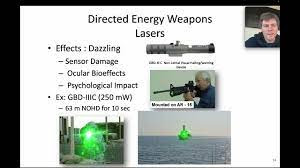Patent No. 4315502 Learning-Relaxation device
Patent No. 4315502 Learning-Relaxation device (Gorges, Feb 16, 1982)
Abstract
Disclosed is a device for relaxing, stimulating and/or driving brain wave form function in a human subject. The device comprises, in combination, an eye mask having independently controlled left and right eyepieces and a peripheral light array in each eyepiece, an audio headset having independently controlled left and right earpieces and a control panel which controls light and sound signals to the light arrays and earpieces, respectively. Various control functions allow simultaneous or alternating light and sound pulsations in the left and right light arrays and earpieces, as well as selective phasing between light and sound pulsations.
Notes:
BACKGROUND
OF THE INVENTION
This invention relates to the art of learning and relaxation aids and more particularly
to a device which releases psychological and physiological stress and tension
primarily by stimulating the senses of hearing and sight.
Various devices have been developed in recent years for use in both stimulating
and patterning brain functions in both the fields of psychology and learning.
Thus, the so-called bio-feedback devices utilize electrical signals from various
sensors placed on the body of a subject which sense such variables as skin temperature,
pulse rate, blood pressure and the like. From a summation of these various data,
the subject is provided with some form of feedback which is indicative of these
various conditions. By concentrating on particular symptoms, an alteration in
one or more of the variables may be induced which in turn alters the feedback.
Commonly, an audio tone is utilized to indicate a particular mental or physical
state and variations in the tone indicate differing mental or physical states.
Eventually, the subject "learns" how to induce changes in his physical state
without feedback. A typical bio-feedback device is described in U.S. Pat. No.
3,942,516.
Subliminal stimulation is also known to impart knowledge to a subject through
subconscious mental functioning. A tachistoscopic visual image impressed upon
the field of vision of a subject, such as on a motion picture or a television
screen, can stimulate and be retained by a subject's subconsciousness even when
the stimulus is of such short duration that the subject's conscious mind is
totally unaware of its presence. Similarly, it is also known that audio subliminal
stimulation is possible by overlaying an audio signal onto a normal pattern
of audio input. U.S. Pat. Nos. 3,060,795 and 3,278,676 are illustrative of these
concepts.
In the field of learning, sensory isolation, wherein distracting sensory inputs
are suppressed, is well known. The common study carrel which limits peripheral
vision and usually incorporates sound deadening panels is typical of such devices.
Also known is a learning aid which incorporates a pair of eye goggles which
act in a manner similar to blinders to limit a subject's peripheral vision,
and, as described in U.S. Pat. No. 3,534,484, may also incorporate a source
of an audio signal which acts to block out other distracting audio inputs. This
combination affords the user a reduction in distracting sensory inputs and thereby
assists in the development of concentration on a particular subject matter.
Modern theories of psychology and learning have identified various functional
areas in the physical structure of the brain and central nervous system. Thus,
the so-called left hemisphere of the brain is thought to be the source of logical
reasoning and rote functioning of the human consciousness. Conversely, the so-called
right brain hemisphere is thought to be the source of artistic, creative and
imaginative functioning within the brain.
A similar division has been noted in front and rear brain functioning. The rear
portion of the brain controlling the instinctual function of the body such as
the central nervous system, the limbic system, etc. while human reasoning or
social functioning is centered in the front portion of the brain.
Often the functioning of one hemisphere or portion is emphasized to the point
of suppression of or conflict with the functioning of the other. Ideally, "whole"
brain functioning would be utilized through a balancing of left and right, and
front to back brain functions. In order to accomplish this, it is necessary
to reduce the over-emphasized functioning and increase the under emphasized
functioning to a point where there is cooperative functioning of both brain
hemispheres, side to side and front to back.
It has been found that the brain utilizes wave patterns in order to function.
It has also been found that light and sound stimuli can affect brain wave patterns
and actually alter the flow of these brain wave patterns.
SUMMARY OF THE INVENTION
The present invention provides an apparatus for stimulating and coordinating
whole brain wave function, which apparatus comprises in combination a source
of pulsating light in an eye-covering mask which locates the light sources adjacent
the left and right eyes of a subject and an audio headset which applies sound
signals to the left and right ears of the subject.
In accordance with the invention, an eye mask generally in the form of goggles
having left and right eyepieces includes a peripheral source of light for each
eyepiece which may be independently controlled for pulsation frequency and light
intensity. The mask incorporates a headband for securing the mask to the wearer's
head and may also include integral air vents.
In a preferred embodiment of the invention, the eyepieces incorporate interchangeable
lens and/or filter elements which may be colored lenses, prismatic lenses, mirrors
and the like. Clear lenses may also be utilized.
In accordance with the preferred embodiment of the invention, the eye mask as
above described, may further include a secondary pulsating light source located
generally above and between the left and right eyepieces. A source of extremely
low frequency (1-30 Hz) electromagnetic force fields may also be provided adjacent
each eyepiece and electrically connected to pulse at the frequency and intensity
of its associated light source and/or audio source.
The eye mask as above described is used in conjunction with an audio headset
which is similar to a set of stereo headphones. Audio signals to left and right
eyepieces are controlled independently along with light pulsations in the eye
mask.
The eye mask and headset are connected, preferably through a single umbilical
connector, to a control panel. The control panel incorporates controls for the
intensity of both the light source and the sound volume. A pulsation frequency
control is also utilized.
In the preferred embodiment, the control panel as above described may further
include switching means which permits simultaneous left and right pulsations
of both the light sources and sound outputs or may also permit alternating left
and right pulsations in each mode. A second switching means may also be provided
which alternates a light pulse with a sound pulse in one position and synchronizes
light and sound pulses in a second position. Thus, in combination, the two switching
means permit four possible combinations of alternating and synchronous pulsations
between the left and right light and sound sources. Each of these switching
modes stimulates a particular area of the brain to effect an alteration in brain
wave form functioning.
Further in accordance with the invention, a heartbeat sound output is provided
by the control panel for overlaying a pulsating heartbeat sound on various other
audio signals. A heart rate control is also provided for increasing or decreasing
the heartbeat sound rate.
In accordance with yet another embodiment of the invention, provision is made
for input of audio signals from external sources, such as tape, phonograph,
voice microphone or the like. The external audio inputs may also be independently
controlled for volume.
--------------------------------------
In the operation of the above device,
the subject places the eye mask 20 and the headphones 14 in position on his
head and with the control panel 32 switched to the "ON" position by switch 106.
The subject is able to control the intensity and pulse rate of the light and
sound sources through the various control functions to produce stimulii which
act to relax and/or stimulate brain functioning through the senses of hearing
and sight.
While the invention has been described in the more limited aspects of a preferred
embodiment thereof, other embodiments of the invention have been suggested and
still others will occur to those skilled in the art upon a reading and understanding
of the foregoing specification. It is intended that all such embodiments be
included within the scope of the invention as limited only by the appended claims.






Comments